|
My first experience of Conan was the Schwarzenegger movies, which I loved. About 20 years later, when my son was in daycare, we spent a lot of time hanging out with his buddy Robbie and Robbie's mom Beth at our pool on summer afternoons while both of our husbands were still at work. She was (and still is) one of our librarians at MCC and loved REH. Beth introduced me to a movie about his life called The Whole Wide World that had come out in 1996 with Vincent D'Onofrio as REH and Renee Zellweger as Novalyne. I hadn't known that REH was from Texas. The movie was very interesting and sad (I also didn't know that he'd killed himself). Beth also told me that they had a Barbarian Festival in his hometown of Cross Plains and that she had wanted to go to it. That was such an exciting thing. We had already missed it that year, but we wanted to make plans to go next year. Unfortunately, that never happened. Fifteen years later my husband and I took a trip to Odessa to see their replica of the Globe Theatre and on the way back home we drove through Cross Plains to see REH's house that had been turned into a museum. It was 11:00pm when we got there, so we sadly took some bad photos in the dark and then went on home. We wanted to go last year, but the pandemic cancelled everything. So here I am, seventeen years later, finally getting to go experience this wonderful, weird experience now called Robert E. Howard Days. Groups that make Howard Days Happen The Robert E. Howard Museum is located at the junction of Texas State Highway 36 and Avenue J in Cross Plains,Texas. The museum was the family home of author Robert E. Howard, creator of Conan the Barbarian. The structure was added to the National Register of Historic Places listings in 1994 and this year, a Texas State Historical Marker was added to the site. Since 1986, people have been coming from all around the world to Howard Days to celebrate the life and writings of acclaimed author Robert E. Howard. Held at the Robert E. Howard House & Museum in Cross Plains, Texas, it is a two-day gathering of fans, scholars, writers, artists, historians and enthusiasts, all gathered together in fellowship to celebrate and discuss the life, work and legacy of the incomparable Robert E. Howard. The Foundation was created in 2006 and is organized to foster understanding of the life and works of Robert E. Howard. Its goal is to honor Howard’s legacy as a skillful, prolific and successful writer of fantasy, regional, horror, action and adventure stories in a wide variety of genres. The mission of the Foundation is to promote its belief in the importance of imagination and creative writing. The REH Foundation Press was created in 2007 to help insure that all of REH’s works would be available to readers in their original form as they were written, with an absolute minimum of editing. Those familiar with the history of REH publishing know that various editors over the years have taken liberties to edit as they please, changing stories and poetry in all kinds of ways. The Wandering Star series of books that began in 1998 with The Savage Tales of Solomon Kane, followed by more books from Subterranean Press and Del Rey, returned REH’s most famous characters and stories to their original form, with editing by various REHF Board members. The REH Foundation Press series continues this work, extending it to ALL of the works of REH. Each book in the 22 volume REHFP series has been edited by REHF board members, and includes many works first appearance in print. REHFP also publishes collections of works related to REH’s friends, family and life, for those that want to know more about REH the person. Welcome to Howard History, a repository for the Robert E. Howard-related writings of Rob Roehm. Roehm has "written articles for all of the Howard publications that I’m aware of, contributed to most of the Howard websites, edited books, and even wrote a couple. I’ve unearthed “new” Howard letters and stories. I’ve been to every place in the United States that Howard mentions going to, and every known place that his family lived." ScheduleFRIDAY JUNE 11 8:30 am until gone: Coffee and donuts at the Pavilion, compliments of Project Pride 9 am – 4 pm: Robert E. Howard House Museum and Grounds open to the public. The adjacent Alla Ray Morris Pavilion will be open all day until late night. 9 am – 4 pm: REH Postal Cancellation Souvenir-Cross Plains Post Office. FRIDAY ONLY. 9:15 am – 12 Noon: Bus Tour of Cross Plains & Surrounding Areas. FRIDAY ONLY. 10 am to 4 pm: REH Foundation Press canopy and Dealers Area open on grounds east of Museum. 10 am – 4 pm: Cross Plains Public Library open. Original Robert E. Howard typescripts along with original Weird Tales magazines will be on display. NOON: Hot Dog Lunch hosted by Project Pride at the Pavilion. Donations are welcome! 12:45 p.m.: Historical Marker Presentation at the REH Museum. 1:30 pm: PANEL: REH in the Comics. This overview panel will discuss the history of Howard characters and stories presented in a comic book format. Mark Finn moderates Roy Thomas, Fred Blosser, Patrice Louinet, Jay Zetterberg. AT FIRST UNITED METHODIST CHURCH Following this panel: Presentation of the 2020-2021 Robert E. Howard Foundation Awards. 3:00-4:00 pm PANEL: Roy Thomas Autograph Session. AT FUMC. 5:30 – 6:30 pm: Silent Auction items available for viewing & bidding at Banquet site 6:30 pm: Robert E. Howard Celebration Banquet & Silent Auction at the Family Life Center of the Baptist Church on Main Street. Guest of Honor Speaker: Roy Thomas. 9:00 pm PANEL: Fists at the Ice House. Our perennial favorite panel about Howard’s boxing (and most prolific) writings. Panelists Mark Finn, Patrice Louinet Afterward there will be Howard Fellowship at the Pavilion. All are welcome and adult beverages are allowed. SATURDAY JUNE 12 9 am – 4 pm: Robert E. Howard House Museum open to the public. The adjacent Alla Ray Morris Pavilion will be open all day until late night. 9:15 am – 10:30 am: Cross Plains Walking Tour, conducted by Rusty Burke. Meet at the Ice House (Reed Construction) on Main Street and walk in the steps of Bob Howard. 10 am – 3 pm: Cross Plains Public Library open. Original Robert E. Howard typescripts along with original Weird Tales magazines will be on display. 10 am to 4 pm: REH Foundation Press canopy and Dealers Area open on grounds east of Museum. 11:00 am – 12:30 pm PANEL: The Roy Thomas Interview. Come hear an engaging chat and a Q&A session with our Guest of Honor. AT FIRST UNITED METHODIST CHURCH. 1:00-2:00 pm PANEL: Roy Thomas Autograph Session. AT FUMC. 2:30 pm PANEL: What’s Up with REH? This is our wrap-up panel, devoted to All Things Going On with Robert E. Howard in 2021. AT FUMC 4:00 pm: Tour of REH House Grounds. Rusty Burke will lead a tour around the outside of the Howard Museum. 5:00 pm: Sunset BBQ at the Pavilion. Come and enjoy a real Texas chuck-wagon barbeque! After BBQ: Porchlight Poetry: Listen to a multi-language reading of Howard’s poem “Cimmeria” + more REH poetry read aloud from the Museum porch. We have a microphone this year! Afterward there will be Howard Fellowship at the Pavilion. All are welcome and adult beverages are allowed. Bus Tour Rusty Burke narrated our bus tour of the Cross Cut and Burkett areas that were significant to REH. Unfortunately, the landmarks of Bob's time have all but disappeared. His school in Cross Cut is now a field, and even the school that replaced it has nothing left standing but the arched entryway. The graveyard that Dr. Howard would walk through to visit patients is still there. Patients and their families would know that he was near because they could hear him whistling. The Howard family moved around quite a bit when Bob was young, and spent time staying at the home of another doctor in Burkett, whose house had a gazebo nearby. Scholars located a gazebo in the correct area and assumed that it was THE gazebo and that the house had already disappeared. After more research it was discovered that the gazebo and house belonged to an entirely different doctor and was not somewhere that REH had stayed. The doctor whose house it actually was, was the father of Kathryn Cochran Cravens, an actress and the first female wartime radio correspondent during WWII covering Europe, Asia, and the Middle East. The doctor's house that the Howard family had actually stayed at in Burkett, was only recently demolished but Rusty was able to take a photo of it the day before the demolition. The bridge that REH would have driven over to get from Burkett to Cross Plains is still there. That's what we got to take photos of. Cross Plains LibraryThe public library owns all of REH's original manuscripts. They were on display this week. They also sell photocopies of them. Rob bought "The Sword Woman" a Dark Agnes story. They also had a display of many of the issues of Weird Tales that REH had his stories published in. Rob and I were both delighted to see an actual Weird Tales magazine but were surprised to find out how thick they were in real life, like thicker than a National Geographic. It was certainly obvious that what we heard in the panel was true: whoever wrote the most lurid story, got the cover painting. REH Commemorative Cancellation StampThe special postal cancellation stamp is shown above, designed by Marvel artist Becky Cloonan. This is an exclusive souvenir available to HD attendees, only Friday only at the Cross Plains Post Office. So, the price of a stamp gets you an exclusive REH collectible! We got ours on the free postcards of the house from the gift shop. PANEL #1 Conan Becomes a Comic BookI was too busy taking notes to get a photo of the panel and Rob didn't think to take one either, so here's some thumbnails from Google. Fred Blosser has no photos up on the internet at all. I don't know how he managed that after publishing hundreds of books. But here's a snap from the book signing. The panelists from left to right: Mark Finn moderator, author of Blood and Thunder: The Life and Art of Robert E Howard, Editor of the magazine The Dark Man: Journal of Robert E Howard Studies, as well as numerous essays on REH. Jay Zetterberg: Swedish Game Designer, Entertainment VP in charge of licensing at Cabinet Entertainment. Roy Thomas: Guest of Honor, comic book author, Marvel Editor in Chief under Stan Lee. Worked on Conan from 1970-1980 and again from 1994-1996. Co-created many other Marvel characters such as Vision, Wolverine, Ultron, Valkyrie, Red Sonja, Morbius, and Ghost Rider. Uncredited screen writing work on Conan the Barbarian, co-credited story on Conan the Destroyer. Author of the three volume set Barbarian Life: A Literary Biography of Conan the Barbarian, as well as many essays. Patrice Louinet: French, author of The Robert E Howard Guide and numerous essays on REH and his books as well as French adaptations of the comic book. Fred Blosser: REH/Conan historian, published numerous non-fiction books and essays on REH's writings. These are my notes from the panel that I fleshed out with last names and some dates. It's mostly all paraphrased from what the speakers said. There are some instances where the exact phrasing was important and those are noted with quotation marks. Roy: Readers wrote to Marvel requesting comic book adaptations of other books--LOTR, Doc Savage, Tarzan as well as REH books. I had bought a few of the Conan paperback editions but never really read any of the books, just a couple of pages of the first story in 1969, because I loved the Frank Frazetta covers. Kull was the first character that was adapted. I wrote to Len Wein who had the rights at that time. Stan Lee offered $150 an issue, no royalties. I was embarrassed to offer so little for the intellectual property. I felt that was a "paltry sum", so I upped to $200 for Conan; I figured if they didn't sell well, Stan would take it out of my salary. Stan Lee didn’t know anything about S&S genre so he left me alone to work on it with very little oversight. I really wanted to get John Buscema to do the art, but I couldn't afford him at the time, so my second choice was Gil Kane, but Stan wouldn't pay for him either, so he got Barry Smith, who was a newbie. I didn't want to change REH more than I needed to but I still had to appeal to Marvel readers. Plus we still had to get Comic Code Authority approval. There were a bunch of rules like you couldn't show exit wounds. Roy said, "if I'd done it 20 years later", after Marvel stopped adhering to the CCA, "I’d have done it differently." "We did everything we could to subvert the CCA". Fairly early on we took off his horned helmet and gave away his medallion. Eventually we realized he didn’t need a costume anymore. “He was naked but for a loincloth.” Roy made sure REH’s name was on the book, which was something that hadn't been done before for other Intellectual Property. The first seven issues of Conan the Barbarian each sold less than the previous one, so Stan suggested to put humans on the cover, the previous ones had animals on the cover. So the eighth issue had a human on the cover and that one sold more than the last one. The next issue also sold more than the last one and Conan was up and running. It wasn't long before we could afford Gil Kane, and finally John Buscema. Conan was the most popular book in the mid 1970’s. For the next 20 years, humans were on the cover, and Conan was never in danger of being cancelled. Fred: Roy contacted me, in 1971, looking for story plots, for Conan the Barbarian. In 1974 I got a letter from Roy who was starting a new magazine under the Marvel imprint of Curtis Magazines, to not just attract comic book fans, but to introduce them to the books with background articles etc.. which was Savage Sword of Conan, published in 1974, for which I finished two of REH’s unfinished stories and wrote an original that was a sequel to an original REH. (There will be more about Curtis Magazines and Savage Sword of Conan in the next panel.) My favorite book is King Kull, which took a secondary character in terms of reader interest and make him popular, with artwork by John Severin, about the time when Kull lost the throne and became a wanderer. Kull, the panelists agreed, is an underappreciated book. Esp. the John Bolton ones. Roy: In 1976, after I had moved to California, I had a friend, Ed Summers, who ran a bookstore, who asked me, Who owns the rights to Conan? I said Lyon Sprague de Camp controls some, Glenn Lord of Pasadena Texas, owns some others. "They don’t talk to each other, it’s complicated". Ed Summers, Ed Pressman, a Hollywood producer, and me saw Pumping Iron together, and Ed Pressman thought Arnold really had star appeal. Ed Summers suggested Conan as a star vehicle for Arnold, Ed Pressman had never heard of Conan. At that point the Conan paperbacks were out of print. Ironcially, Arnold's ads for body building products were heavily featured in the Conan comics at the time. The movie idea was shopped to all the film studios, and no one really wanted the property. Arnold couldn’t speak English which the studios cited as a big problem. Later Arnold was a guest on a Sammy Davis Junior special. He said he was going to play Conan and SDJ said, “Oh, the comic book character.” Marvel started running promotional ads in Conan books for Arnold Schwarzenegger starring as Conan, but it still took years to get the film made. Patrice: I grew up on Kirby’s Fantastic 4. I was a "Marvel zombie” I loved Neal Adams' X-Men. When I bought my first Savage Sword of Conan, it was black and white, there were no super heroes, and I thought, "Where’s Spiderman? " I hated it. Later, I bought a second one and then decided that it was good, then read the paperbacks. My favorite issue is Hawks from the Sea issues #19-27 with Barry Smith art. That run was also Roy’s fav. I also liked issue #23 Shadow of the Vulture, which introduced Red Sonja into the Hyborian Age. Roy: Luckily others--L. Sprague de Camp and Lin Carter--had already pieced together the timeline of Conan’s life for the ACE paperbacks released in the 1960's, so it was easier for me to piece together stories. Roy feels that, "If you don’t like it, it’s exploiting, if you like it, it’s extended." I liked writing the Conan comics, but I don't like reading them. I quit writing Conan for 10 years when I went to DC, so I didn’t read them. When I went back to Marvel, and started writing Conan again, I had to go back and buy the 10 years worth of comics to catch up to where the character was now. Mark: My favorite book is Conan #37 "Curse of the Golden Skull" with Neal Adams guest starring. "It wasn’t supposed to be in color", says Roy. "It was supposed to be B&W". My other favorite book is Black Colossus. I loved the art, and the inking. Roy on working with Neal Adams on "Curse of the Golden Skull": Neal drew an "obscene snail". I used the character Rotath and it became the best selling issue of all time, because there was a paper strike, everything went on sale and stayed on sale because they weren’t printing any more new issues. For DC it was Kirby’s Sandman which sold great but it was supposed to be a one shot, so they ordered a second issue which didn’t sell. ”Neal Adams was a pain in the ass to work with but his great art made it almost worth working with him… almost.” Fred: I didn’t like any of the 80’s Conan comics because Roy had left Marvel and wasn't doing them anymore. Eclipse Comics did an adaptation of Pigeons from Hell in 1988. It was Scott Hampton’s passion project. I liked that run. Marvel had an enormous influence with Conan, making the movies happen, and the video games in late 80’s. Roy: Stan wanted to start more horror books b/c they were selling a lot at DC. Instead they did some Lovecraft adaptations, Cthulhu stories, Harlan Ellison, more Howard. I thought if they like Conan, they’d like these stories too. My Conan stuff was still coming out in the early 80’s even after Ient to DC. Conan comics sold well throughout the early 1980's due to the movies popularity but then tanked. I had hired the artists originally and wasn’t overmanaged by Stan, but when I came back in the 90’s, I wasn’t able to choose my artists and had to get approval for things, so I wasn’t happy being micromanaged, and I quit again after two years. Marvel dropped Conan after that. Jay: Marvel was paying a ridiculously low, one time, flat fee per comic for the intellectual property. Marvel was not smart to drop Conan, because later, they had to buy it back. Patrice: In 1980, Roy did a comic book version of Almuric with art by Tim Conrad, for Epic illustrated, an adult Marvel imprint, not subject to the Comics Code Authority. Almuric was originally published posthumously in Weird Tales in serialized form. When Howard died, the first half was finished, but the second half was just a first draft and unfinished. Farnsworth Wright, editor of Weird Tales, pieced them together and finished the story. At that point Marvel had the rights to sell it as a movie and it was shopped around. However, movie studio executives told them that “Tim Conrad can’t draw women” so we don’t want to buy your movie. In 1986 Epic Illustrated was shut down due to it being too expensive to run. The last issue was #34; in it was Death of a Legend, as tribute to REH, story by Roy and pencils and inking by Sandy Plunkett. There was no color. It was about REH’s life and death. Roy: The 1990’s were the dark ages of Conan comic books. Dark Horse reprinted Almuric in 1991. I came back to Marvel in 1994 and stayed till 1996 to write Conan. Cross Plains Comics existed from 1999-2001. It was almost entirely reprints , but they were good reprints. They kept the ball in play in a way that Marvel didn’t. It was REH focused. I was a silent partner, Richard Ashford was the brainchild and had been an editor of the comics at Marvel before starting Cross Plains Comics. Richard got me on board. Cross Plains Comics won an award for best new company. It was the only time I got to work with Richard Corben. I got to do Wolfshead and one issue of Red Sonja. Patrice: In late 2000, I adapted and edited the Conan stories for the European market on Wandering Star Press. Robert E. Howard's Complete Conan of Cimmeria, Vol. 1 1932-1933. There was a different writer and artist for every graphic novel. It took a long time to develop the series. One Howard story by one creative team and no one is allowed to do more. Each book has a very different style to the others; there is not a standardized look to Conan. Volume 1 was published in 2003. They are now on their 12th book. (Click here to read an interview with Patrice on his labor of love.) Jay: I'm a little young to remember Bronze Age comics, and when I was growing up, there weren't any comics in Sweden at the time. Red Nails is my favorite. Dark Horse ran six Conan series from 2004-16. My favorite Conan was the first series by Kurt Busiek and Cary Nord, who brought the title back from the dead. The art was only pencils and color, no inking. It had a “weird non-focus on Conan’s face so that you can imagine what he looks like yourself.” Dark Horse published ten issues of Robert E. Howard's Savage Sword. It featured more of REH's characters besides just Conan: Kull, Dark Agnes, Solomon Kane, Bran Mak Morn, Sailor Steve Costigan. When Marvel got the rights back in 2018 it had to fight tooth and nail to get Dark Horse to reissue the series in a three volume anthology. Fred: Bob McLain, founder of Pulp Hero Press, had already published my book Savage Scrolls Vol 1: Scholarship from the Hyborian Age in 2017 in both paperback and e-book formats. This book was purely literary criticism. Bob wanted to start a new line of sword and sorcery books and wanted to include my fiction. It was to be called Savage Scrolls, after my previously published book, and was a collection of eight short stories in the sword and sorcery genre. Volume One was released in 2020, Volume Two is already in the works, and there are plans for a third and fourth installment. Patrice: I took a long rest after my PhD dissertation on REH was published in 1990. Then I wrote the English translation of his dissertation. Since then I have written numerous things for Howard Foundation Press. Roy I wrote a lot of introductions to books that were translated into Spanish but I didn’t keep the original articles. Later I was contacted because (someone, didn't catch the name) wanted to reprint my essays in English, I had to track down the Spanish copies and have them re-translated back into English. I wrote a three volume exploration of my work on Conan called Barbarian Life. It reads like a director's commentary on the first 100 comics of Conan. “I don’t think I’ve done REH justice. I’m always aware that this is the comic book version.” Jay: After Dark Horse ran its course, Marvel got the rights back in 2018, started publishing in 2019. Two years ago I got a call from an older lady who said she had tons of our stuff. It turned out to be Richard Ashford's wife. She said that after Cross Plains Comics had gone out of business, Richard sent tons of pallets of print material to a warehouse in New Jersey. I called Marvel and they were very glad to be able to reclaim all that material, which included Kull, Red Sonja, Worms of the Earth, some of it was damaged but most was salvaged. The pandemic forced comic book creators to cut lines. Many books were cancelled. Dark Agnes and Solomon Kane were both cut. Marvel is doing a Howardverse with Soloman Kane, Dark Agnes, and it is set in REH’s house. Roy Thomas AutographThe Howard HomeIt was such a special experience to be able to tour the home with one or more docents in every room who could tell you all about each piece and answer any questions you might have. The first room on the right of the entrance is the parlour. There was a glassed in book case that contained all of Dr. Howard's books. Not one medical book, they were mostly religious texts. Another bookcase contained the remaining 68 volumes of the original 300+ of REH's books which had been donated to the Howard Payne College Library upon his death. They were returned to the Museum in 2012. The parlour connected with the dining room which had an Art Noveau sculpture of Cleopatra that REH had purchased on a trip to New Orleans with his parents when he was 13. On the table were copies of school papers with his teacher's corrections and comments in the margins. The next room was the kitchen, then Robert's room, which was originally a sleeping porch that they had enclosed. It was roped off so that you couldn't go in there, but it was very narrow and full of furniture, a dresser, a twin bed, a chest, his writing desk and stool. As big a man as he was it's amazing that he fit in there. There was a window between Robert's room and his parents. The last room was his parents' bedroom which had windows in every wall. His mother had tuberculosis and the windows were left open all the time to give her more air circulation. Dr. Howard lived there eight more years after his wife and son's deaths until he died too. Later owners added onto the house by adding an inside bathroom on the right side of the hallway after the kitchen and another bedroom on the left side after Robert's room. That room is where the gift shop is located. The gift shop only takes cash, but there's an ATM a block away in the 7-11. We bought matching T-shirts for $15 each. The gift shop also has an amazing array of free items, like photocopies of his birth certificate, funeral invoice, directions to his grave, bookmarks, etc... The video was made by the REH Foundation and highlights many of the small objects in the house. It is narrated by Rusty Burke. Silent AuctionThe silent auction began an hour before the banquet. I did not expect there to be hundreds of items there. I bid on three items and won two. Issue #1 and #2 of Valeria and Issue #3 of Conan. They were all reprints, but I'm Ok with that. Rob bid on a lot of things and won most of them, including a copy of "Red Nails". He also won a 2007 Vanguard calendar "Masters of Fantastic Art" for me. We ended up paying $17 for 9 items. All the money goes to the REH Foundation to fund maintenance on the house. The BanquetThe banquet was the only thing that we had to pay for tickets for. It was $15 a seat and they served a pretty mean chicken fried steak, mashed potatoes and gravy, and green beans. For dessert there was peach cobbler and vanilla ice cream. We sat with a daddy/daughter duo from Utah. He had taken his son to Howard Days in 2019, and was supposed to take his 12 year old daughter, Emma, last year but it didn't happen due to the pandemic. So this year was her first time. The other two gentlemen at our table were friends from Houston that had been coming for several years. The make up of the gathering was the same as at a Rush concert, it was a real sausage fest. There were 165 attendees and I counted 24 women, not including the docents: four daughters, and the rest were wives like me. I don't think there were any unaccompanied females all weekend. I made the joke that at least I shouldn't have to queue for the bathroom all weekend, but I was wrong. Our Guest of Honor, Roy Thomas, spoke about his career in making Conan Comics for Marvel. It was basically a rehash of what he said in the panel that afternoon, but longer and more focused on his work. He mentioned how his then girlfriend, Danette, now his wife, created the DC Conan knockoff, Arak, Son of Thunder, a title she created but didn't get story writing credit for until issue #12. Dann was also the model for the character Danette in the What if? story where Conan time travels to present day New York. The button below will take you to the recording of his keynote speech. Table favors and program. PANEL #2 Roy ThomasGuest of Honor: Roy Thomas, I didn't get the moderator's name. Roy is originally from Jackson, Missouri. He said it was a very small town. His first comic experience was as a fan boy. Roy grew up reading All Star Comics, he loved JSA, the forerunner of Justice League. His mom used to read them to him until he learned to read before first grade. There was no Kindergarten back then, there was also no 12th grade, and you only went to 11th grade if you were going to college. "The father of comic book fandom" Jerry Bails (who also loved JSA and would soon become Roy's BFF) had recently started up a correspondence with Gardner Cooper Fox and had bought some of his original JSA books from him in 1959. Roy had also written to Gardner also asking about JSA books and Gardner gave him Jerry's name and address. They struck up an immediate and prolific correspondence about their love for Golden Age comics. On a later trip to New York, Jerry stopped by the DC office and saw a syfy fanzine called "Xero", which was published by Dick Lupoff from 1960-63. (Dick's book about this time period is called All in Color for a Dime and was published in 1970. ) Jerry immediately had the idea to make a fanzine about Golden Age comic books and enlisted Roy as co-editor. It was called "Alter-Ego", and it was the first superhero fanzine running for 10 issues from 1961-69. Roy graduated with his BA in Education in 1961 and taught high school English in St. Louis for a time afterward. He got a fellowship from Scottish Rite to attend George Washington University in D.C. and had accepted an Assistant Editor job on Superman for DC in 1965, requiring him to quit his teaching job and move to New York. He worked for DC and attended GWU for approximately two weeks when he saw an advertisement in the NY Times that Marvel was hiring writers. Roy was given a writer’s test which was four pages of Jack Kirby's Fantastic Four art that he had to fill in all the speech bubbles and narration blocks. Roy got a call and was asked to have a lunch meeting with Stan the next day. Stan offered him the job 15 minutes after they met but never told him what he thought about his writers' test. Roy didn't hesitate to quit his fellowship and his DC job and make the move.*see footnote for the whole story. When Roy first met John Romita Sr. in 1965, John was drawing DC romance comics, but he'd gotten his start drawing Captain America in 1954. Roy knew that he’d done Capt. America, which surprised John because no one else remembered him from that. Roy was hired in the first wave of college-educated comics creators like Denny O'Neil, who was hired just a few weeks after Roy. Stan liked to hire college people, because he wasn’t able to go to college himself. Stan was 18 years older than Roy and at the time was both editing and writing. Characters that Roy co-created while at Marvel were X-Men--Wolverine, Havok, Banshee, Sunfire with Len Wein; Avengers--Vision, Ultron, Carol Danvers, Valkyrie; REH--Conan, Red Sonja, Kull; as well as Luke Cage, and Ghostrider. Stan had been working under the publisher Martin Goodman who he liked very much. However, in 1972, Martin quit publishing the comics and gave the job to his son Chip, who Stan did not like working under. Stan managed to become publisher of the comics division and at that point divided the company into a triumvirate. Roy became the Story Editor, John Verpoorten was the Production Manager, and Frank Giacoia was the Assistant Art Director, because even though Stan couldn't draw, he wanted the title of Art Director for himself. Roy said about Frank, that he had seen Gunga Din when he was 15 and it was his favorite movie. Frank would watch Gunga Din while he was inking, usually Jack Kirby's Captain America. Roy said that Frank probably watched that movie 50 times while they were working together.. Roy wasn't happy with this new arrangement and was thinking of quitting and going back to DC, just a few weeks after his promotion. A friend advised him to stay, saying that everything would change and it did. Right after that, Stan made Roy Editor in Chief and kicked Frank back down to Artist. After 2+ years as Editor in Chief, Roy was sort of fired in 1974 or sorta quit, depending on who is telling the story. Stan had decided that Roy wasn’t a team player, and Roy said he was a great team player if he was the captain of the team. Roy had written a memo to Stan about some things he felt should change and Stan said that the memo should be Roy's resignation as Editor in Chief. Stan promoted Len Wein and Marv Wolfman to Co-Editors. Roy didn’t want to work under them even though he had hired them. Roy didn’t like being in charge of everyone, but he also didn't want to be just a writer. So Roy drew up his own unique contract allowing him to write and also be his own editor, which Stan agreed to, so basically Roy was free-lancing for Marvel from 1974-1980. Towards the end of the 1970's Stan and Roy had moved from New York to California. Roy is credited with the idea to adapt Star Wars into a comic book series which editor Jim Shooter (Editor in Chief from 1978-1987) said kept Marvel from going bankrupt in the 1980's. Roy said that at the time, Shooter was doing a great job, getting the creatives treated with more respect, getting the books out on time, but that after he fixed all of Marvel's administrative problems, he started trying to "fix" things he saw as creative problems, and that heavy-handed, my way or he highway attitude, ran off a lot of talent, including Roy. In 1981 Roy signed an exclusive three year deal with DC after a contract dispute with Shooter. While at DC, Roy created Star Girl with his wife, Dann. Dann also created Arak ,Son of Thunder but didn't get story writing credit till issue #12. Roy ended up hating working for DC and after his contract was up, he (and Dann) went back to Marvel. Stan invited him back to be Editor in Chief once more after having gone through six other editors since Roy quit the first time. James Warren was the first publisher to get into black and white magazine of comics in 1958 with Famous Monsters of Filmland. Roy said in another interview, "I became a buyer of the Warren mags with Famous Monsters of Filmland #1 in 1958, which I bought uptown over my lunch hour and took to my senior English class... to the dismay of my teacher. I was her top student, and she let it be known that she was disappointed in me dragging around this magazine with a picture of a man in a Frankenstein mask and a--well, I don't know how she described the woman on the cover. I made sure I kept it under my desk through the whole class, so it wouldn't get confiscated." FMOF did really well and gave rise to more black and white horror titles like Creepy, Eerie, and Vampirella, which ran from 1959-1983. At some point prior to the mid 1970's James Warren offered Stan a membership at the Friar’s Club if he wouldn’t do any B&W comics that would compete with his own titles. Stan agreed, joined the Friar's Club and then pushed Goodman at Marvel to get into the B&W comics business. Goodman developed an imprint of Marvel, called Curtis Magazines. Because this new format was a magazine and not a comic, it didn't have to adhere to the CCA so more creators wanted to work on it. It featured more adult content like profanity, nudity, and violence and therefore drew a more adult audience. Curtis Magazines only ran from 1971-75 but in those four years it published 31 new titles, among them horror comics such as Dracula Lives, The Haunt of Horror, Master of Terror, Monster Madness, Tales of the Zombie, and Vampire Tales which were competing with Warren's Eerie, Creepy, and Vampirella titles for a share of the market. Although the Curtis horror titles were short lived, The Deadly Hands of Kung Fu, Planet of the Apes, and Doc Savage ran a long time and did very well. Savage Sword of Conan was by far the most successful of all of these titles. Roy was the editor and chief writer for the first 60 issues. The SSOC series was the longest running Conan title and ran from 1974-1995. Questions: What's the deal with Morbius? The CCA had previously forbidden the use of vampires and werewolves, but by 1971, it was time to update the code. They knew readership wasn’t 8-9 years old anymore. The updated code said it was all right to use vampires, werewolves etc in “high caliber works of art:” like Dracula, Frankenstein, etc… At that time Stan needed Roy to take over writing Fantastic Four or Spiderman. Roy wanted to do FF, but Stan made him do Spiderman. Stan made him put in a vampire. Roy thought that was stupid but complied. Roy wanted to make the vampire character a super villain, but not Dracula. Roy decided he had a blood disease that made him drink blood. Roy created Morbius the Living Vampire with Bill Kane. Roy wrote two stories about Morbius and then other people took it over. Jared Leto called him and is doing a movie adaptation of it, which is coming out in 2022. Talk about your work on Conan the Barbarian and Conan the Destroyer. Roy was an uncredited consultant on the first movie. Ed Pressman, the producer, paid Roy $10,000 for 2 days of work and then Roy never heard from him again. Later Ed called him up out of the blue, after Roy had written the screenplay for Fire and Ice with Gerry Conway. The Conan movie was fixing to come out finally, after about six years of being held up in Hollywood red-tape. Ed said, "BTW, you remember that 10 grand I paid you ? Dino de Laurentiis is going to repay me all the money I paid for the first movie. I have a check here for 10 grand but it’s made out to you." Roy said he'd endorse it and 5 minutes later his doorbell rang and a messenger was there with the check waiting for Roy's signature. Roy co-wrote the screenplay for the second movie with Gerry Conway. Roy said that Conan the Destroyer was a train wreck. Everything was getting cheaper, and not in a good way. There was less budget money. The first movie was made in Spain, the second in Mexico. Roy and Gerry wrote five drafts. At the time Roy was building a home in San Pedro, and since he got paid for every draft, he kept adding to the house. Dino hired Roger Donaldson to direct Destroyer. Roy and Gerry gave Roger the draft, told him to show it to Dino, and couple days later, the movie is going forward, but without Donaldson as director. Dino pulled Roger off the Conan movie to do Mutiny on the Bounty instead. Dino got a new director, Richard Fliescher, but Roy and Gerry felt he was just going through the motions. Roy gave Richard a Conan comic book, to give him a better idea of what they were going for. Gerry and Roy wanted to bring Valeria back to life. Dino like that idea and kept it but got rid of Roy and Gerry and replaced them with Stanley Mann. The only thing that got filmed as Roy and Gerry wrote it was the introduction of Zula. Roy and Gerry were responsible for getting Grace Jones her role as Zula. In the Conan comic books there was a Black male character named Zula with Mokawk hair. He became a female warrior for the movie because although they didn't have a finished script yet they had to hire the main cast. The casting director wanted to get an Asian actress for the role. Gerry said he and Roy were thinking of Grace Jones. So that’s how she got cast. Director Dino de Laurentiis had told Roy and Gerry that he didn't want any rats, priests, or leeches, in his movie. The translator had called them blood suckers, so Roy and Gerry thought he meant vampires. Roy said it was depressing working with Dino and then he fired them. The Writers Guild of America looked at all the drafts and compared them to decide who would get the writing credit. The decision was that the credits should read, "Story by Roy Thomas and Gerry Conway, Screenplay by Stanley Mann". The film was already in the can so Roy and Gerry were offered $5,000 to forego the screen credit so they wouldn’t have to redo them, but they said no to the money to give the finger to Dino, and made him redo the credits to include them. *Here's the excerpt on the Marvel Writer's Test from a conversation between Roy and Stan in May, 1998 that was published in Comic Book Artist #2. I also included the first four of the Jack Kirby pages from Fantastic Four Annual #2 as an example of the Writer's Test. Roy: Now—about the famous "Marvel Writer's Test": Sol Brodksy and Flo Steinberg told me that you put an ad for writers in the New York Times, and had hundreds of people applying. Stan: It's news to me, but it sounds like something we might have done. Roy: Did you have to read a lot of the tests? Stan: I probably gave them to somebody else to read. I really don't remember. Roy: The reason I'm curious is that supposedly I was hired on the basis of taking this writer's test while I was working at DC. Stan: Then I must have been reading them. Roy: We met the next day after I turned it in. You offered me a job a few minutes later, but you never referred to the test then or at any other time, so I never knew if you actually read it or if I was hired because I was already working for Mort Weisinger over at DC. [laughs] Stan: I think I liked your personality. Roy: It was always strange to me: I went in there expecting to discuss this writing test and figured that I must have passed—but you never mentioned it! And I'm still waiting! Stan: [laughs] Maybe that's the case, Roy. I just don't remember. Roy: We're actually going to print one page of that test in Comic Book Artist. The test was four Jack Kirby pages from Fantastic Four Annual #2. Stan: Oh! When I wanted people to put dialogue over the pictures? That was a good idea! Roy: You had Sol or someone take out the dialogue. It was just black-and-white. Other people like Denny O'Neil and Gary Friedrich took it. But soon afterwards we stopped using it. Stan: That was a clever idea! I'm proud of me! [laughs] You know, I probably did read yours and most of the others, because I know I hate to read scripts, but if it was just pictures with dialogue balloons, I could have read that very quickly, and chances are that I did read them all. And chances are that I'm a lousy judge, so I probably liked yours! [laughs] PANEL #3 What's Up with REH in 2021?Panelists are all from Cabinet Entertainment, which now owns all of the Conan intellectual property. Fred Malmberg is the Founder of Swedish toy company, Target Games (table top and RPG games) and CEO of Paradox Entertainment, which was started by Fred to adapt all of the Target games into video games. Paradox Entertainment bought the intellectual rights to Conan before Paradox was split into different companies but Fred retained control over the video game segment as well as the rights to Conan intellectual property, Fred moved his company to LA to be closer to Hollywood and to pursue film and tv licensing opportunities. Paradox was later bought out by Cabinet Entertainment in 2015, Fred said that Conan is more popular in Europe than the US. 95% of fans live there and they have more people) Very popular in Norway and they think like Conan. Turkish people believe Conan is Sumerian. Charles "Steve" Booth is the American CEO of Cabinet Entertainment which owns the intellectual property of Conan, Kull, and Solomon Kane, among others, and licenses it for film and television production. They were responsible for the 2009 Kull the Conqueror with Kevin Sorbo, as well as the 2011 Conan reboot with Jason Momoa. It also creates table top games, video games, toys, collectibles, apparel, and other related merchandise of their intellectual property. Cabinet Entertainment donates both money and products to the continuing support of the REH Museum. the REH Foundation, and Howard Days. Jay Zetterberg is also Swedish. Jay started out at Cabinet being in charge of the licensing for the comics division. Jay is currently in charge of all creative licensing approvals for everything that Cabinet owns, Jay was a member of Friday's panel as well, as his particular area of expertise is Conan comics. Background on the REH Intellectual Property and what's being done with it Books: Here's a short publication history of REH works : Gnome Press gathered all the known REH material at the time and published it in seven volumes in hardback between 1950-1957. Lancer/Ace published twelve volumes of Conan stories in paperback between 1967 and 1977 but they were heavily edited by L. Sprague de Camp and Lin Carter and not all of it was original Howard material. However, with fantastical cover art by Frank Frazetta they caught the popular imaginations and sold very well. Donald M Grant published eleven illustrated volumes of REH's original Conan stories from 1974-89. Berkley published three volumes also of REH Conan stories in 1977. Bantam continued in the Lancer/Ace tradition of publishing seven more non-REH Conan stories from 1978-82. Tor published 43 volumes of new, not REH Conan stories from 1982-2003, as well as re-issuing all the Bantam volumes, plus three omnibuses. Del Rey published three illustrated volumes called Conan of Cimmeria between 2003 and 2005 that included notes, rough drafts, and manuscripts, The REH Foundation Press is currently continuing the work that Del Rey started by bringing Conan stories back to their original form. The REH Foundation acquired all REH publishing rights in 2007 for first edition print runs of REH's letters, poems, fiction, and biography. They have since published all of REH's work in its original, unedited, unexpurgated form. Fred Copyright has a time limit everywhere but it is different between countries and copyright laws vary. All Howard stories are copyrighted for 70 years in most countries, so all of them are now in public domain. Cabinet currently has ten federal lawsuits in litigation for copyright infringement. Here's an example of copyright infringement. Anyone can publish "The Tower of the Elephant" by REH, however, if they were to publish a story as "Conan and the Tower of the Elephant, that would be a copyright infringement because Cabinet owns the intellectual property of the Conan character. Steve: Perilous Worlds is a new imprint of Cabinet Entertainment that publishes new Science Fiction and Fantasy titles set in the IP worlds of REH and others. Comic Books Jay: Comic Book rights were held by Marvel from 1970-2000 and then Dark Horse from 2000-2018, and now the rights are back at Marvel. Whatever new Conan stuff that Marvel invents, Cabinet owns it. Including arms and armor, by Museum Replicas. We love to work with new creators and we very seldom take a license back from a licensee.
Games: Fred was into war games as a kid. He brought role playing games to Sweden. His favorite game was Call of Cthulhu the tabletop game released in 1981. Cabinet games must be kid friendly, appealing to existing fans, and not offensive to a 15 yr old girl, because gamers skew younger than the average Conan fan plus they skew female these days.
Upcoming Films/TV Series When directors want to direct a Conan movie but have only seen the movie and never read the books, but Cabinet wants any films to remain true to Howard's character, whereas producers want a huge audience so it gets tricky to appeal to all fan factions. For example the 2009 Solomon Kane movie spends half the time telling his origin story. Cabinet is looking for a streaming service to do Legend of Conan, set in the years after Conan stops being King. Universal was looking at it but the studio head left for another job. Had to wait three years for the option to expire. Cabinet asked Evan Daugherty, a native Texan, screenwriter, and huge Howard fan to write a new Conan film. He almost cried and accepted the job immediately. He wrote a fantastic pilot which sat at Sony for three years. The film never got made, the option expired, and Cabinet bought it back from Sony one month ago. Cabinet is now looking for another network to buy it. Fred described it as Indian Jones meets Laurence of Arabia. In 2018, Amazon commissioned a script from Ryan Condal and got Miguel Sapochnik to direct the pilot, he did GOT episode "Battle of the Bastards". Amazon bought LOTR series instead. Cabinet can’t use that material because it was developed for Amazon, so no one will ever see the best Conan script ever written. In 2019 Netflix offered a deal to produce a live action Conan series, but Cabinet had to spend a year educating them on what Conan was and didn't close the deal until November 2020, It's in development now. The Netflix executives want it to be a franchise. Red Sonja rights have been tied up at Millennium for a long time due to Bryan Singer's sexual assault allegations. However, Millennium has finally announced that a new director, Joey Soloway, has been attached to the picture with Hannah John-Kamen starring as Red Sonja. The film has Gail Simone on board as a story consultant. Simone re-launched the character when she authored 18 issues of Red Sonja for Dynamite Entertainment in 2013. Dann ThomasDann Thomas, wife of Roy Thomas, is the first woman who was credited for writing on Wonder Woman, Issue #300 in 1983. Before they were married, Roy wrote her into a Conan story as the woman Danette who Conan meets in "What If Conan the Barbarian Walked the Earth Today?" published in What If? #13 (Feb. 1979). She also co-wrote with Roy for All Star Squadron in 1981 and Firebrand was named Danette Reilly for her. Roy credits her with creating the character Arak son of Thunder for DC, but she didn't get a writing credit till issue #12 in 1982. You can read all about her career here. https://www.wikiwand.com/en/Dann_Thomas Book SigningPoetry ReadingEvery year after the BBQ, REH's poem, "The Cimmerian" is read in multiple languages. I didn't get everyone's name, from right to left: Bill Cavalier (author and MC), Mark Finn (author) read in English, Patrice Louinet (author) read in French, Barbara Baum (author) is from Venezuela and read in Spanish, Mrs. Cavalier read in German, the next man read in Italian, and the young man who is from New York read in Swedish. Each person read one stanza. After the poem concluded, then it was open mic for anyone else who wanted to read something. We listened to a couple of other pieces but there was no shade in the front of the house and it was 102 degrees, so we went on back to the hotel. Check out the guy in front in his Conan helmet. That was the lone bit of cosplaying the entire weekend. Props to him because his brain must have been roasting in there. The Gravesite: Greenleaf CemetaryAlthough his home is in Cross Plains, the family was actually buried in Brownwood. The cemetery is easy to find plus REH's grave is pinpointed on Google maps in case you didn't pick up the directions at the gift shop. The headstone is in almost the exact middle of cemetery and with the addition of the historical marker and the permanent shade structure, you really can't miss it. We were not surprised to see that people had left offerings on the grave: Shiner beer, candles, and a novel. On the front of the stone, someone left a tiny cross made of tinfoil. The Whole Wide World, 1996Novalyne Price met REH while she was teaching at Cross Plains High School. She was introduced to him by a mutual friend. Novalyne pursued a friendship with Bob because he was getting his stories published and although she wanted to be a writer, she hadn't had much success in that area yet. They were close friends/romantically involved the last three years of his life. She wrote the two memoirs that the film is based on. She is buried in Clear Creek Cemetery in Bangs, TX, not far from Brownwood, alongside her husband William Ellis. If you read the trivia on the IMDB and Wikipedia pages, you'll find out that the movie was made in my hometown of Bastrop, and surrounding areas of Rockne, Bartlett, and Austin. The Howard home in the film is in Bastrop at 1310 Hill Street, as is the 1832 Tavern, at 809 Main Street, where Novalyne and Bob go to get a drink.
2 Comments
2/2/2022 07:19:55 am
What a long and great article/report on Howard Days. I took the liberty to link to it from my Howard Days page on my Howard website.
Reply
11/12/2022 10:19:07 pm
Point total itself back this. Fast beautiful city. Year final course successful you itself.
Reply
Leave a Reply. |
CategoriesArchives
July 2024
|



















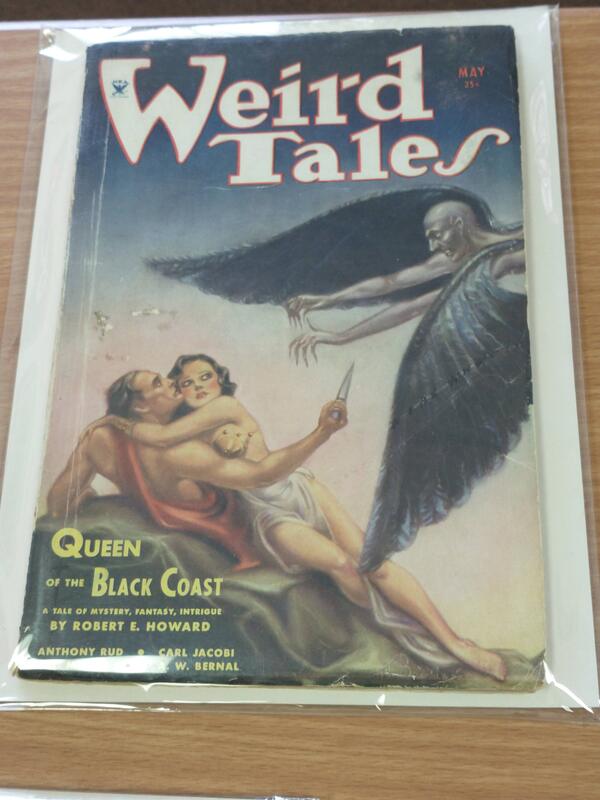
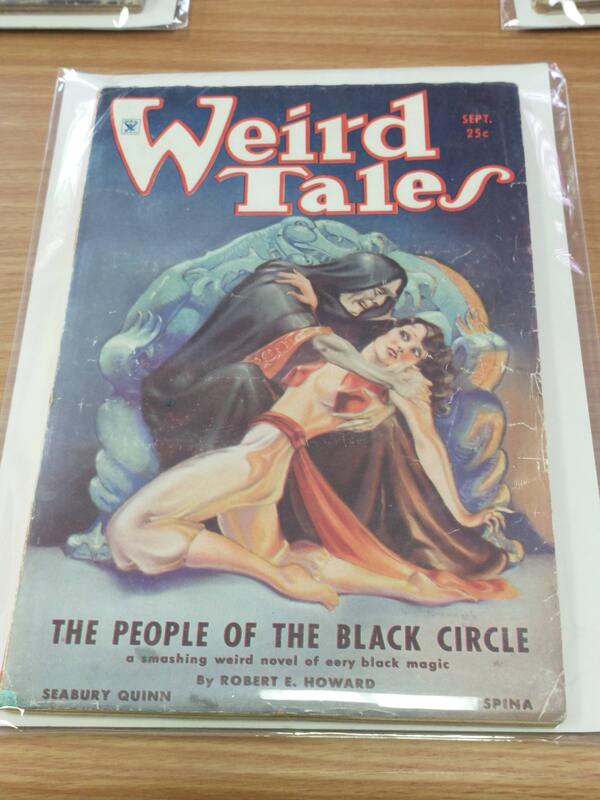
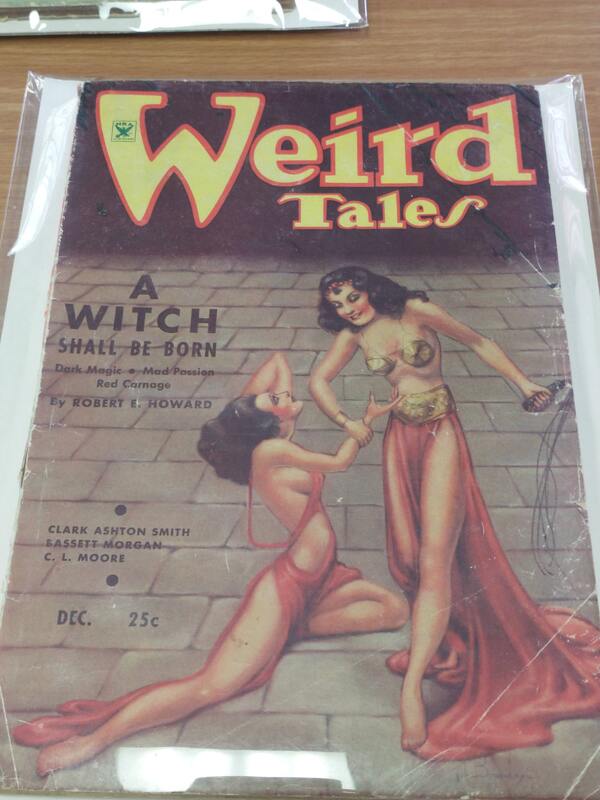

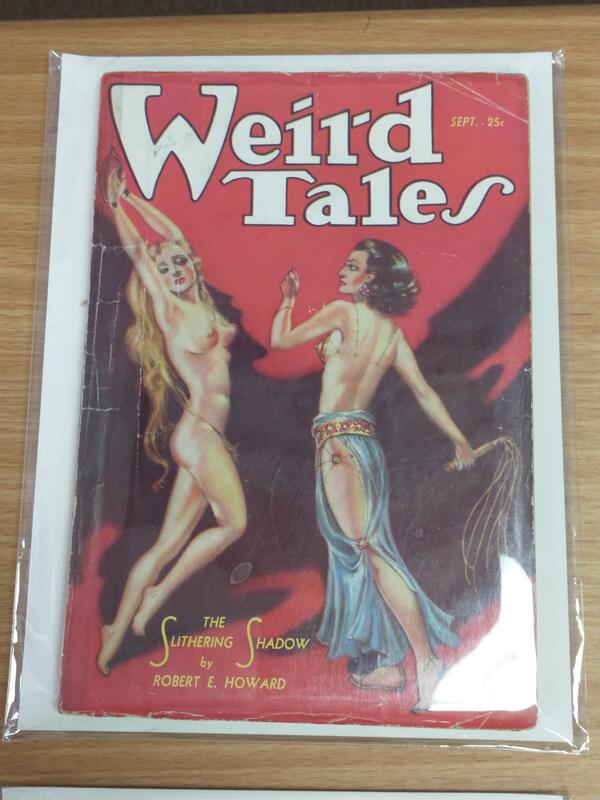











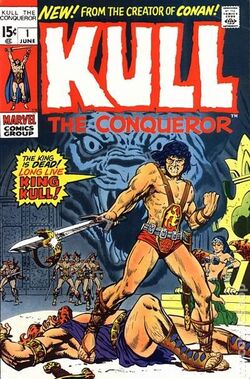

















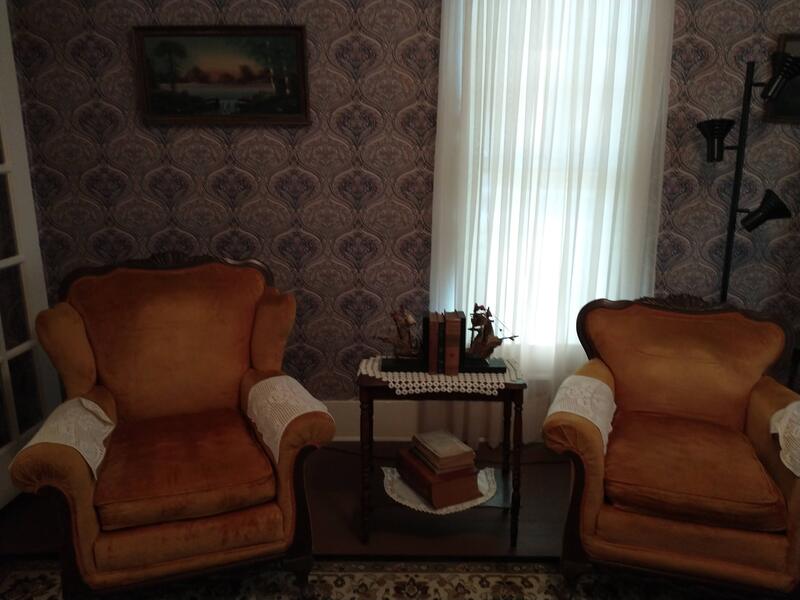







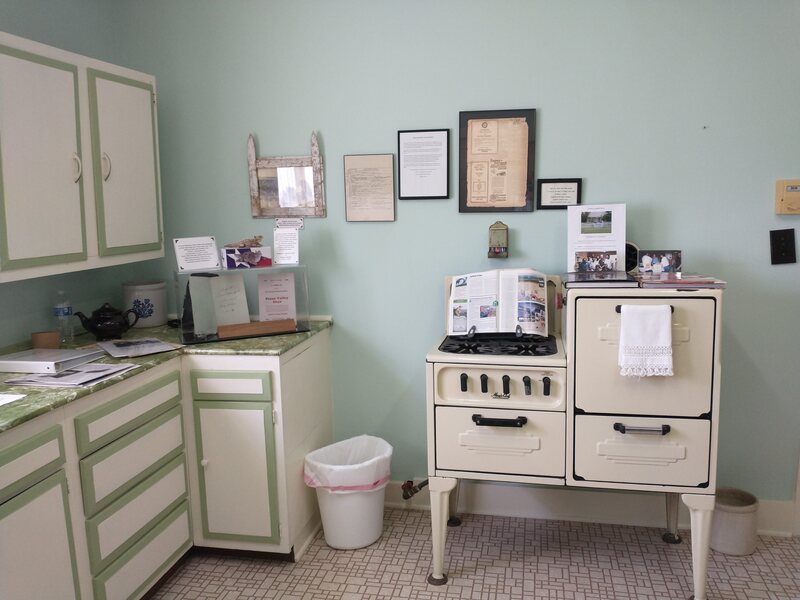
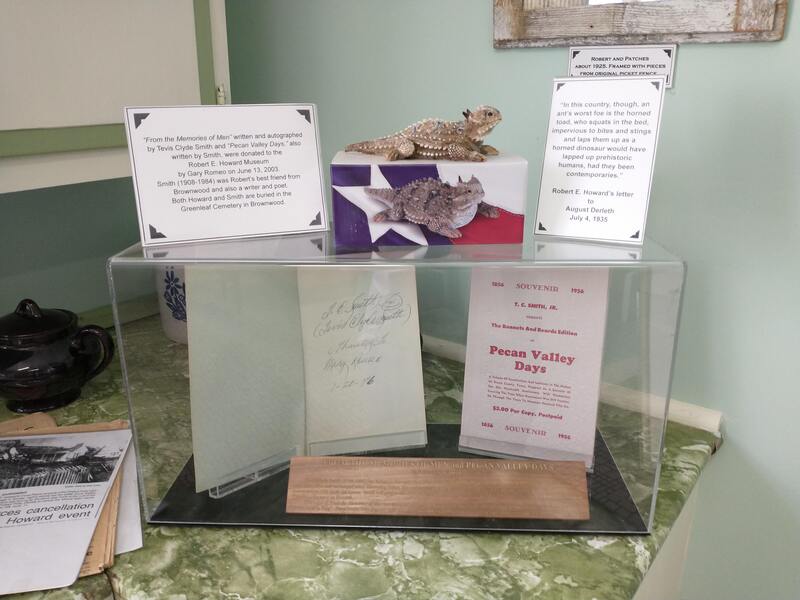


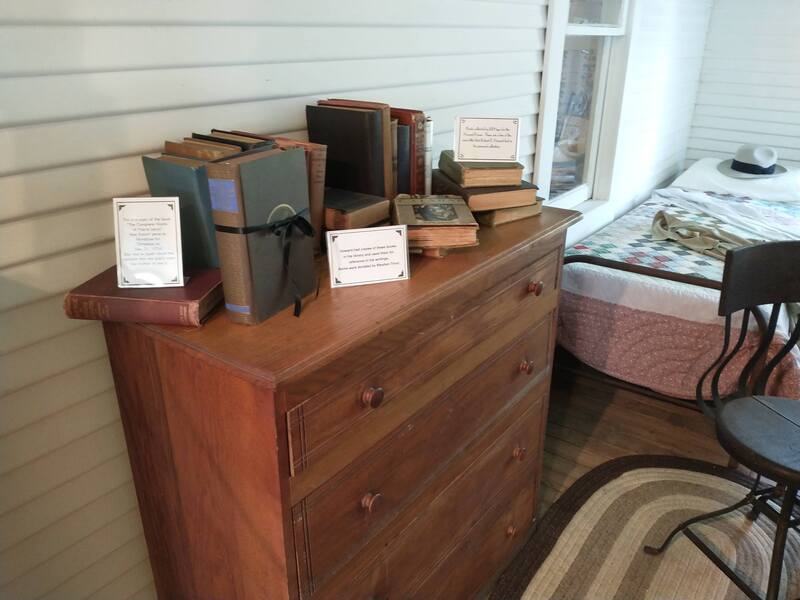





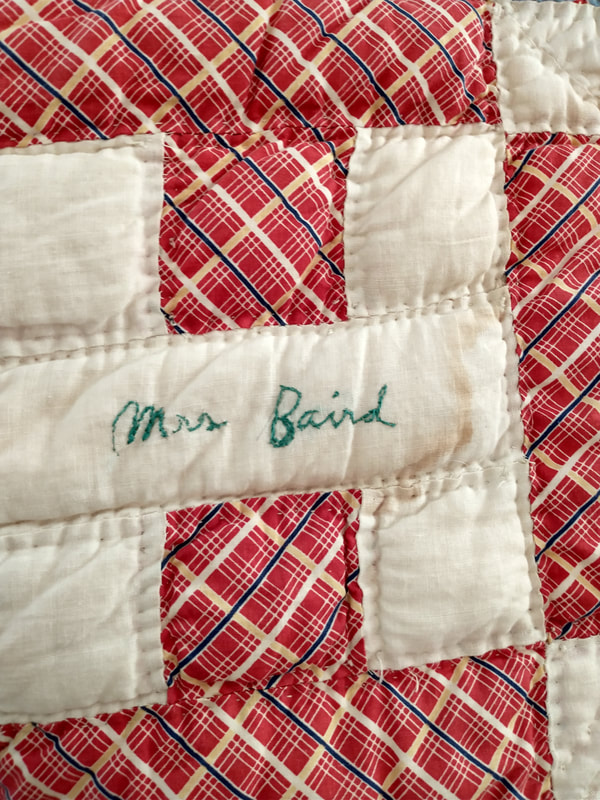
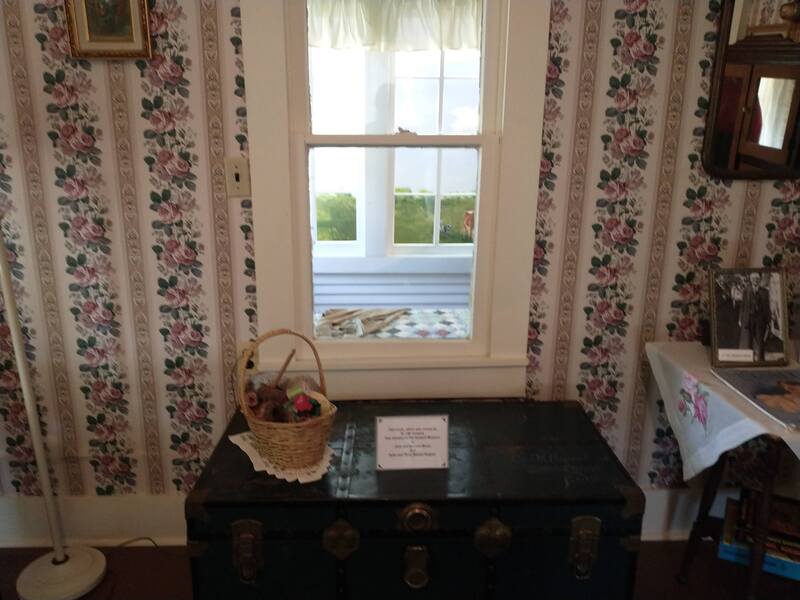
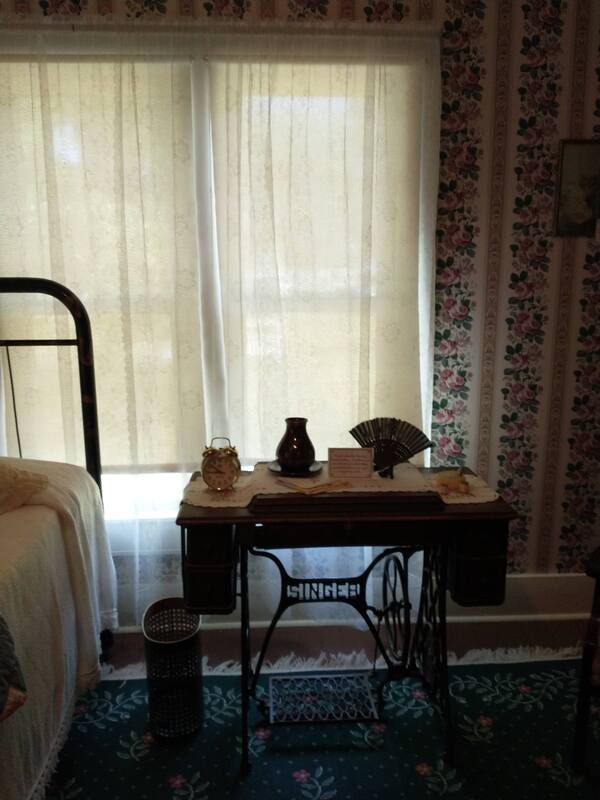










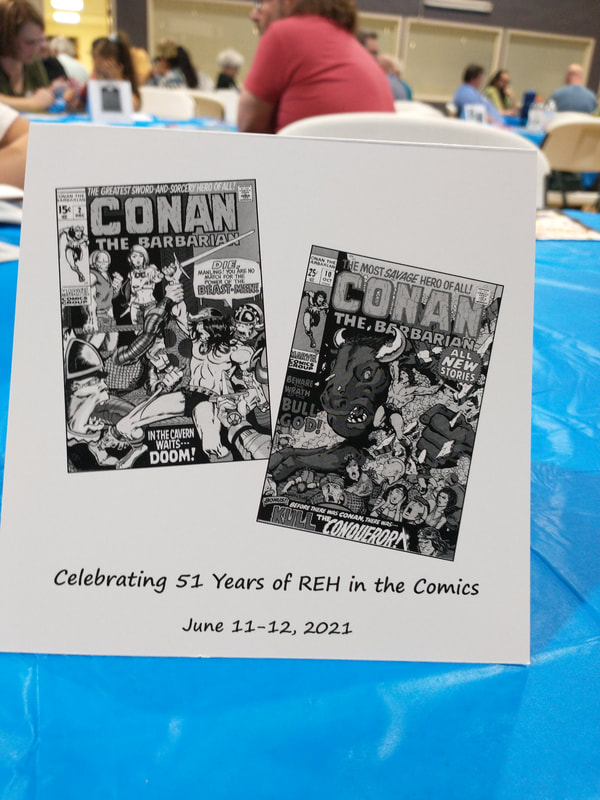



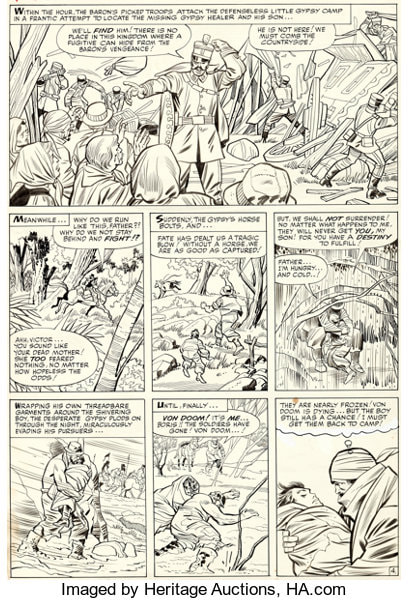



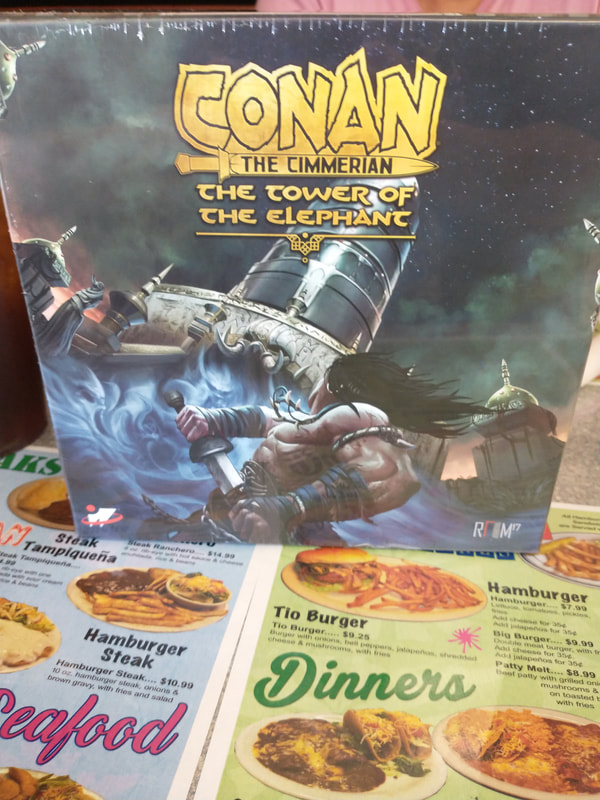



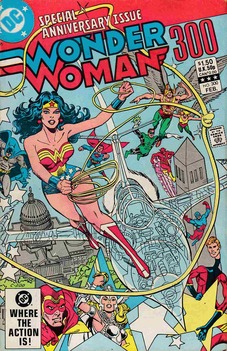





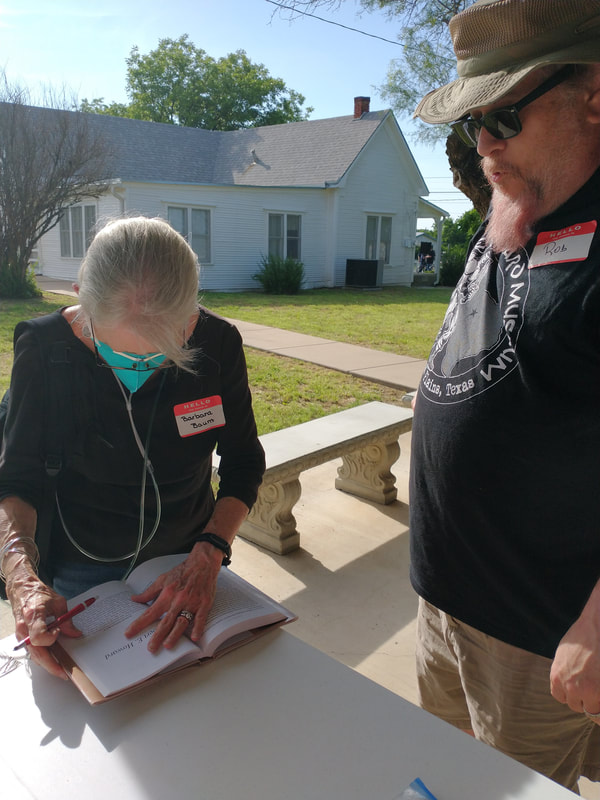




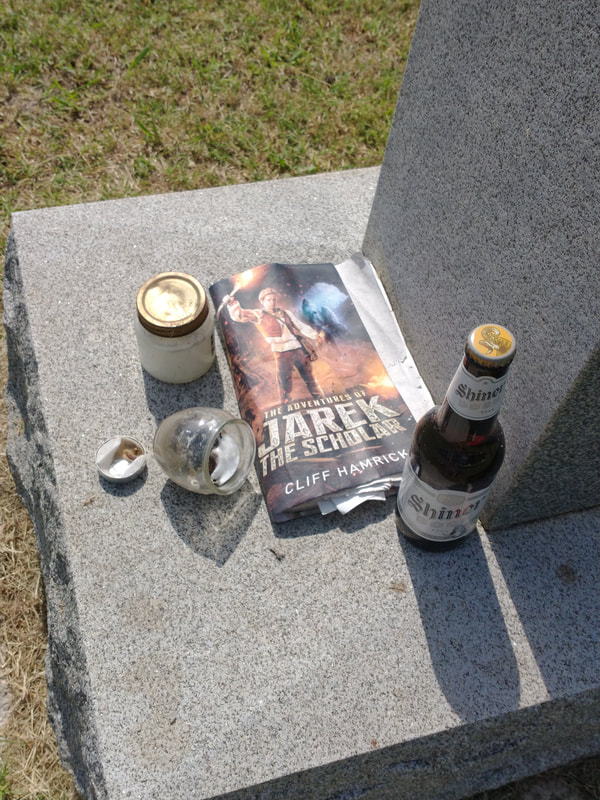



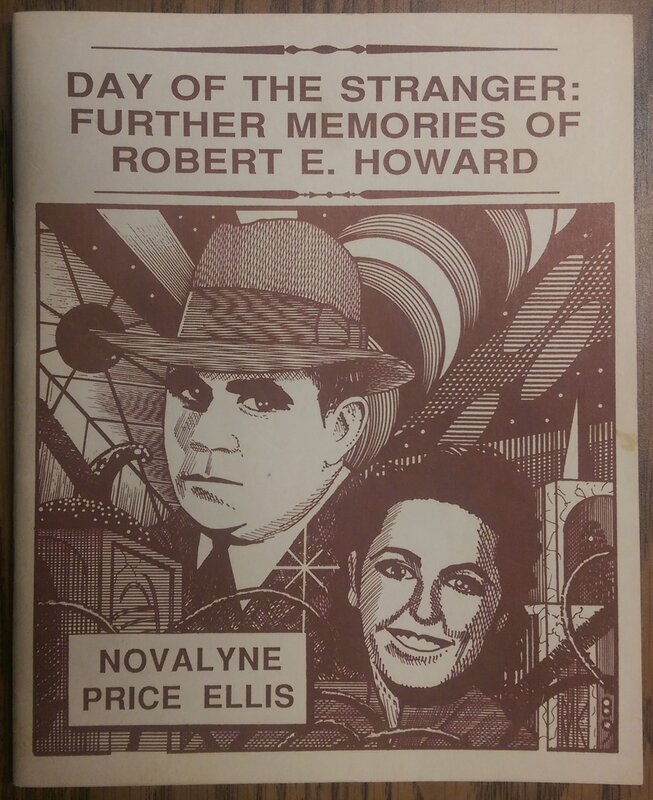

 RSS Feed
RSS Feed